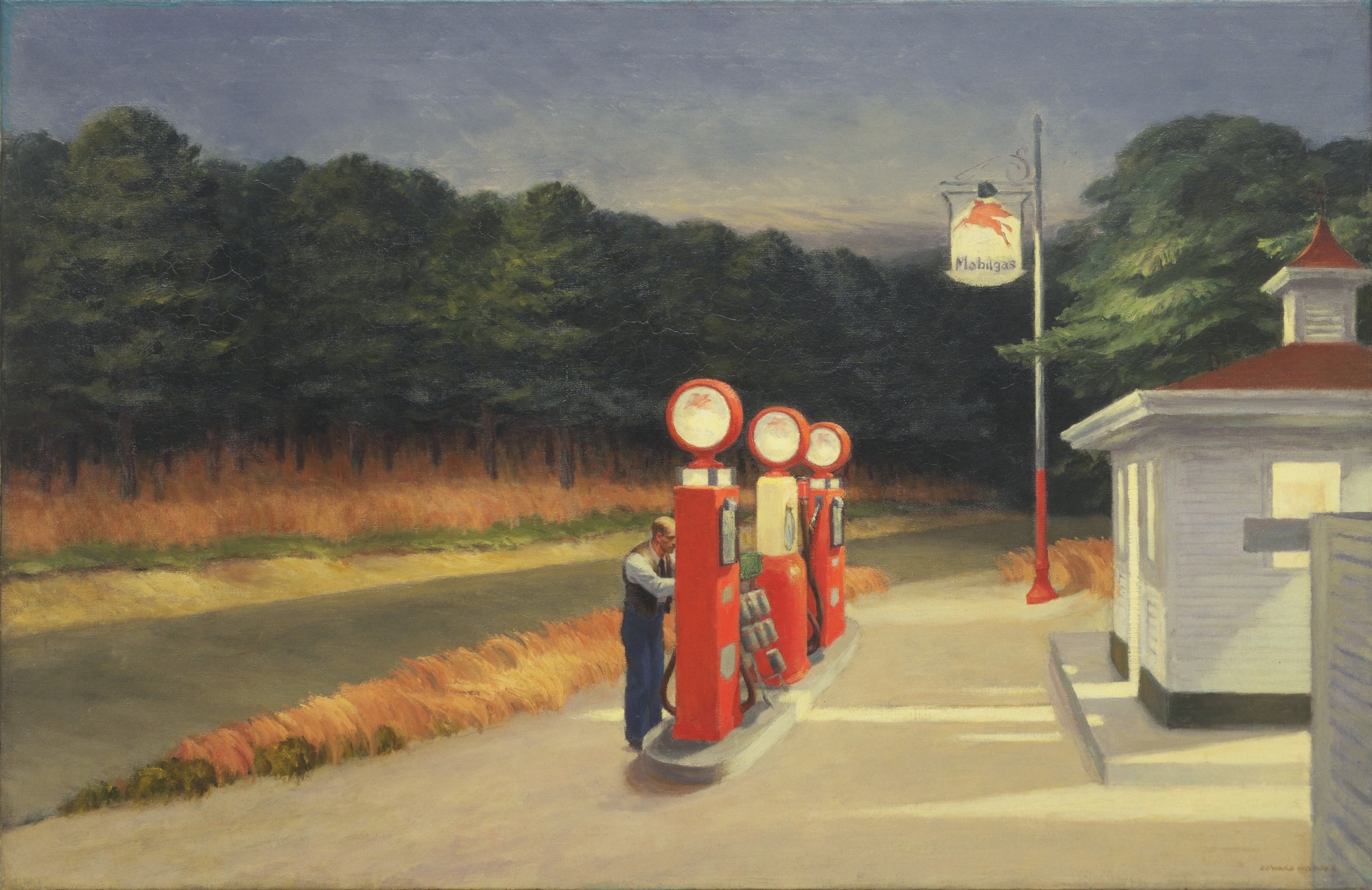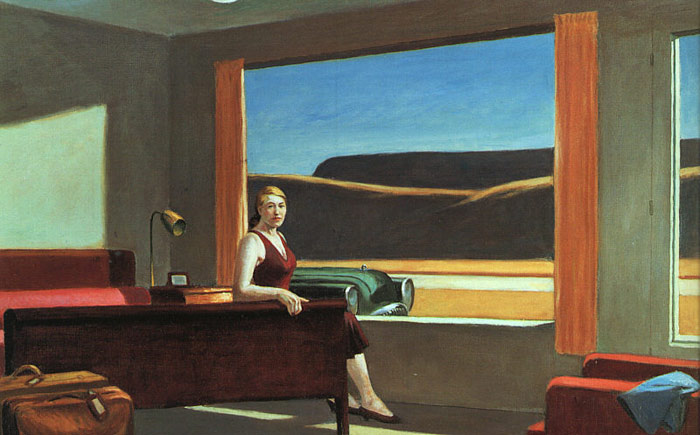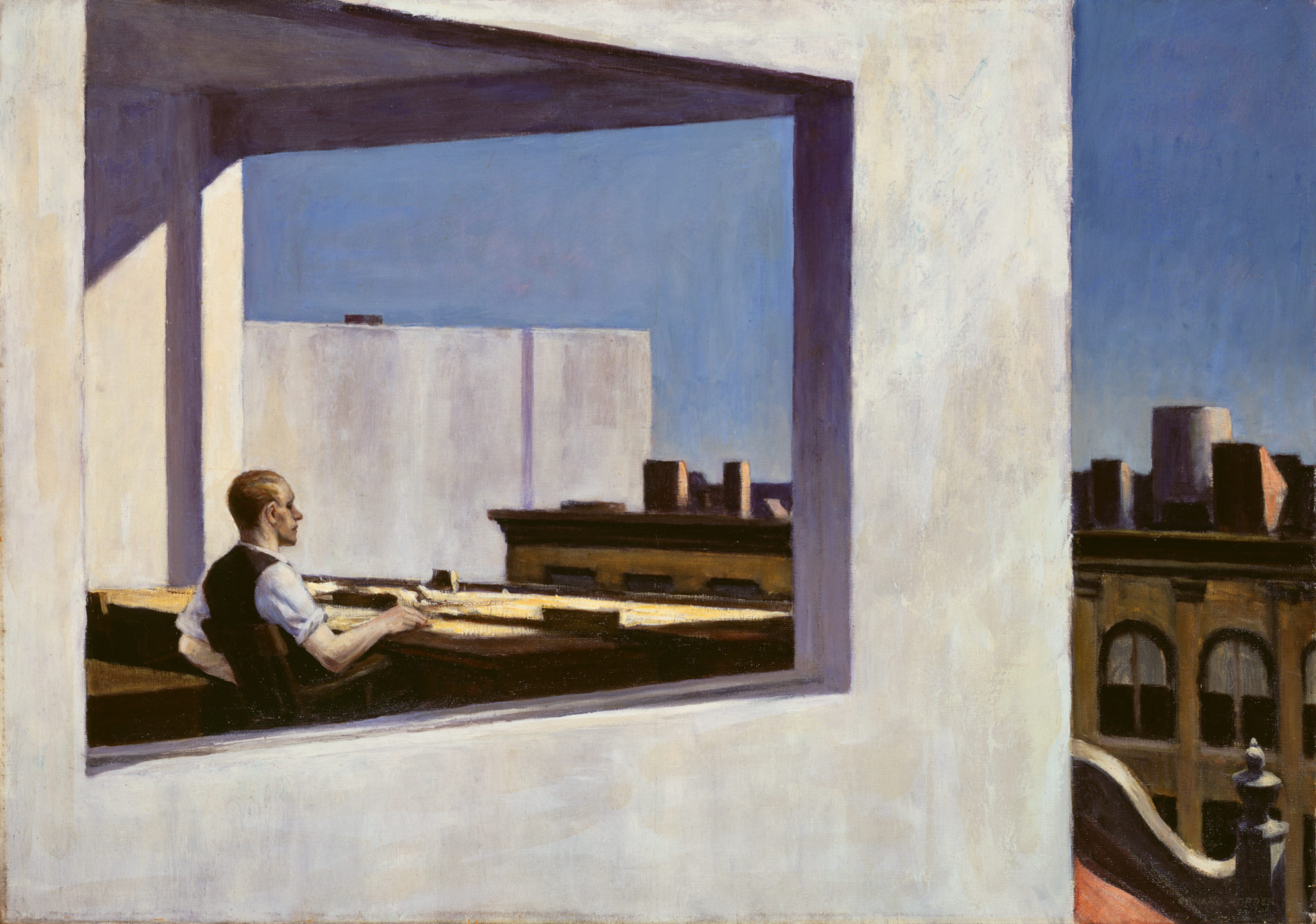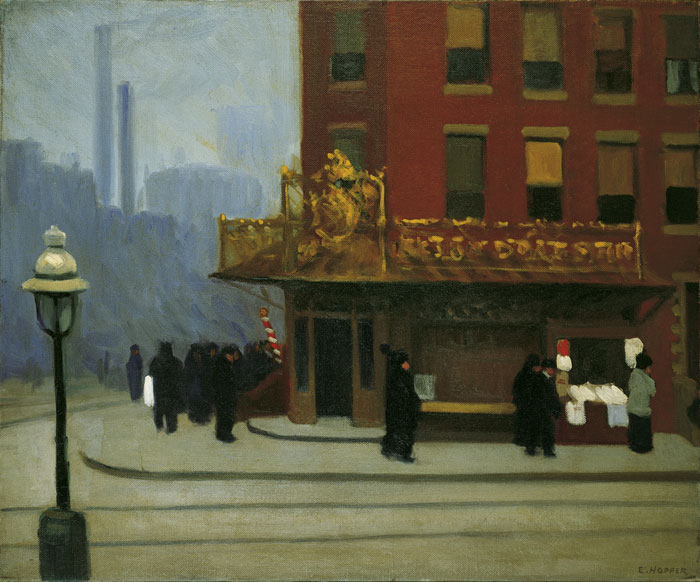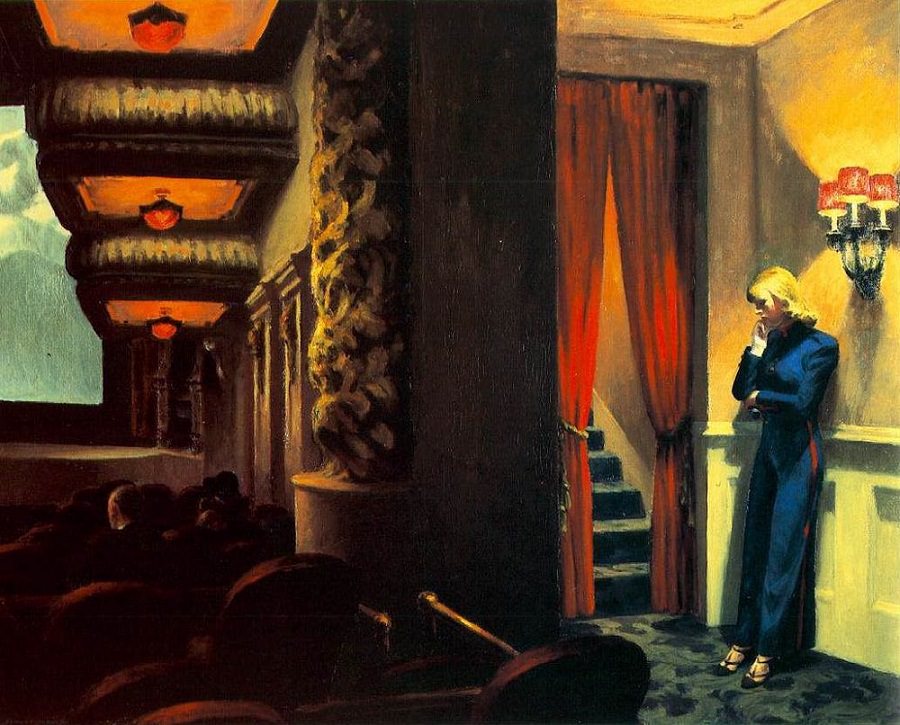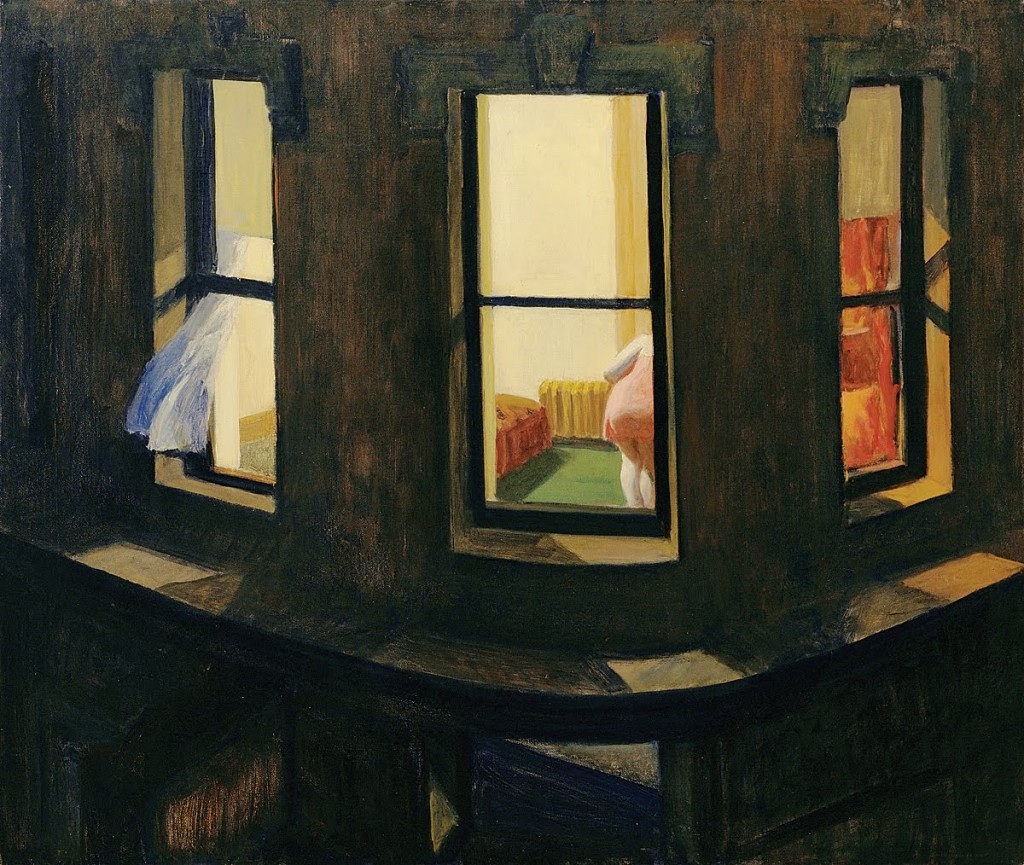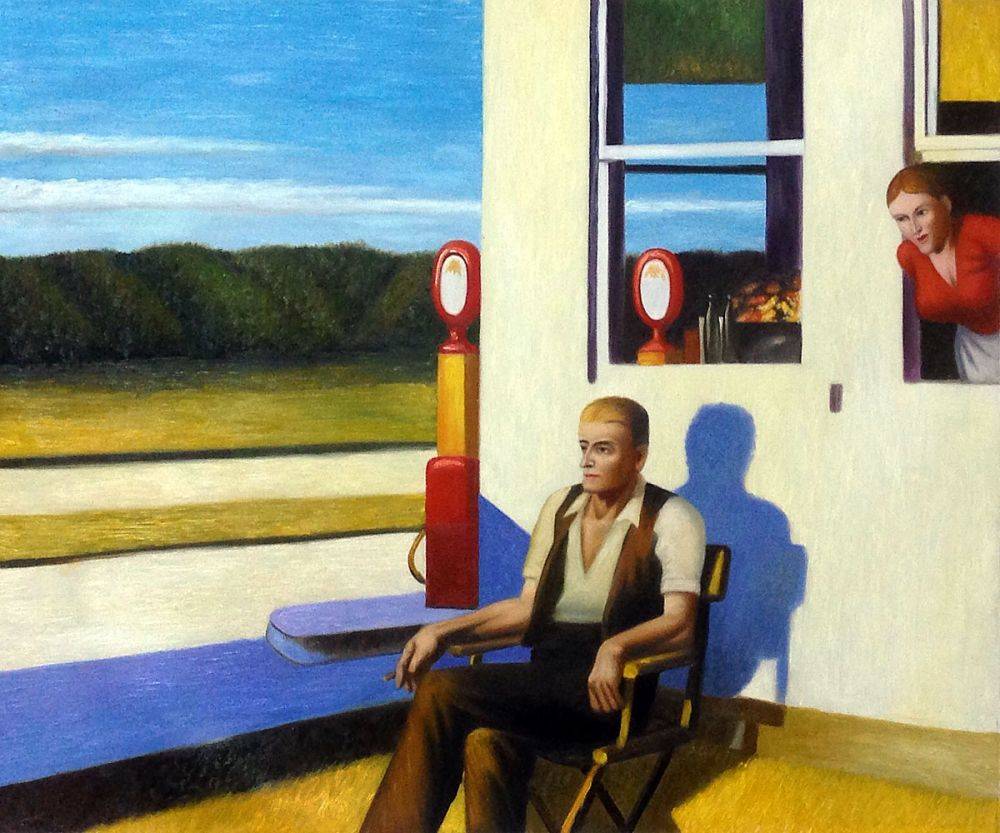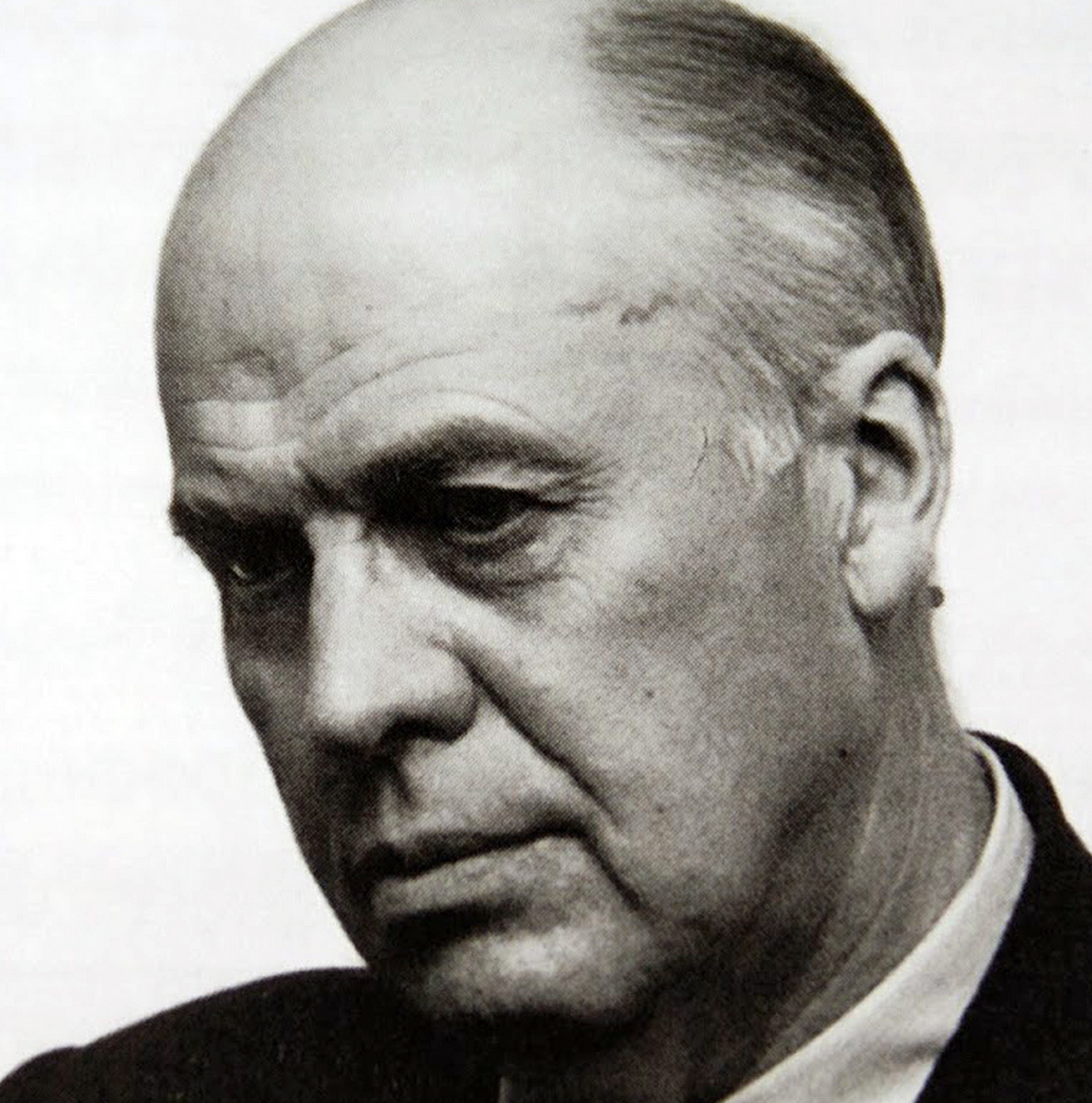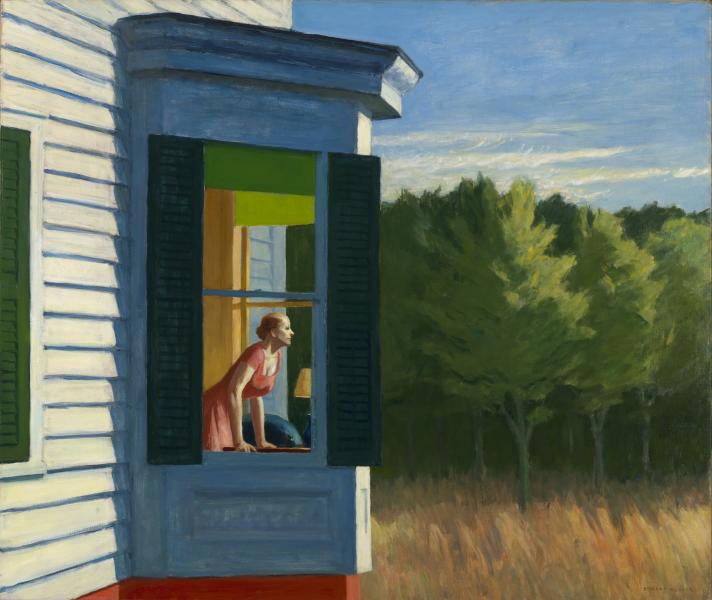Edward Hopper • American (1882-1967)
Shacks at Lanesville C: 1923 • Watercolor on Paper 14" x 20"
“Great art is the outward expression of an inner life (of) the artist.”
Edward Hopper
Somewhere in New York City there is always a crowd and a spectacle, no matter the time of day or night. Yet when one young artist painted the city in his most famous work there were a few lonely people sitting at a well-lit counter in an empty diner. They were surrounded by empty streets and vacant buildings. Welcome to the world of Edward Hopper as seen through one of the most famous works of modern American realism, his painting, Nighthawks.
Consider what happens when a conservative young man with an amazing talent for observation bumps into an art world busy dismantling reality into abstract shapes. Edward Hopper’s reaction to the Fauvists, Cubists, and Expressionists of his day was to ignore them and pursue his individual vision of modern life. Yet, perhaps no modern artist has expressed the isolation of the industrial age with more soul and insight than Edward Hopper.
Hopper was, perhaps, the most famous American realist, not because he painted houses, landscapes and people the way everyone saw them, but because he painted things the way he saw them. And, he saw life through the lens of an awkward young boy who revered the famous writer Ralph Waldo Emerson and his philosophy of life focused on the individual.
(story continues below break)
INTERESTING STORIES FROM OUR SPONSORS

“Shacks at Lanesville” shows how Hopper used reality to make a statement. He could have painted the flourishing creative community that flocked to the Lanesville section of Gloucester in the 1920’s and 30’s, drawn by the natural beauty and inexpensive granite from abandoned mines. But, rather, he painted a remote section of shacks without people, symbolic of a town whose fishing industry had already died, and whose granite industry was in its last days.
Hopper was a prolific painter who saw cities late at night with abandoned streets. Houses alone without neighbors. He saw sailboats alone against the fierce sea and people lost in their loneliness who never look straight at the painter.
Some call his vision bleak. But perhaps beauty is in the eye of the beholder.
Canton Museum of Art Permanent Collection • The James C. & Barbara J. Koppe Collection, 2000.7
4 Ways to Sound Smart When Viewing at The Canton Museum of Art
1.
“Although often grouped with American Scene Painters like Norman Rockwell and Grant Wood, Hopper felt they caricatured America while he ‘always wanted to do myself.’”
2.
“When Hopper wanted to paint a Burlesque House, he enlisted his wife, Jo, to model as the stripper in ‘Girlie Show’.”
3.
“You might not guess by looking at this picture, but Lanesville was a well-known artists community by the time Hopper did this painting.”
4.
“You know, Tom Waits once wrote an entire album named ‘Nighthawks at the Diner’ based on Hopper’s famous painting.”
Hopper Timeline. Scroll over images to see timeline.

